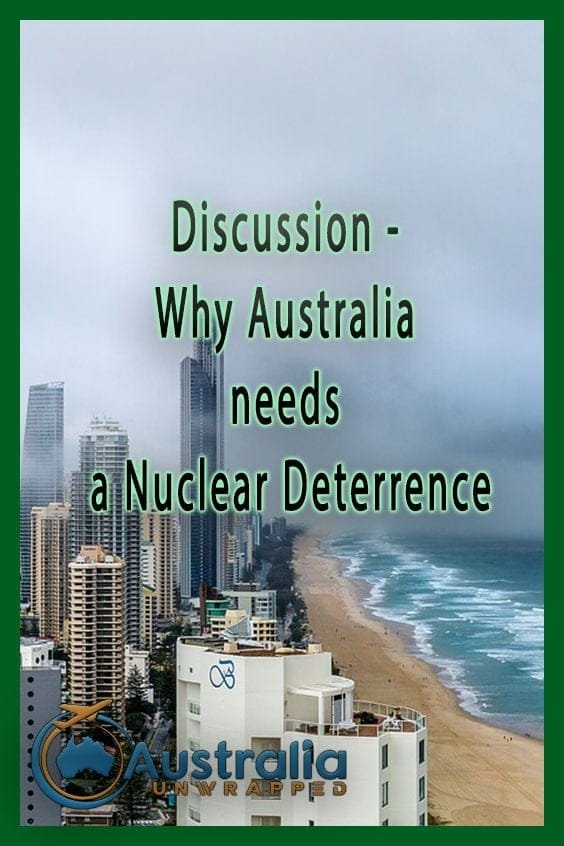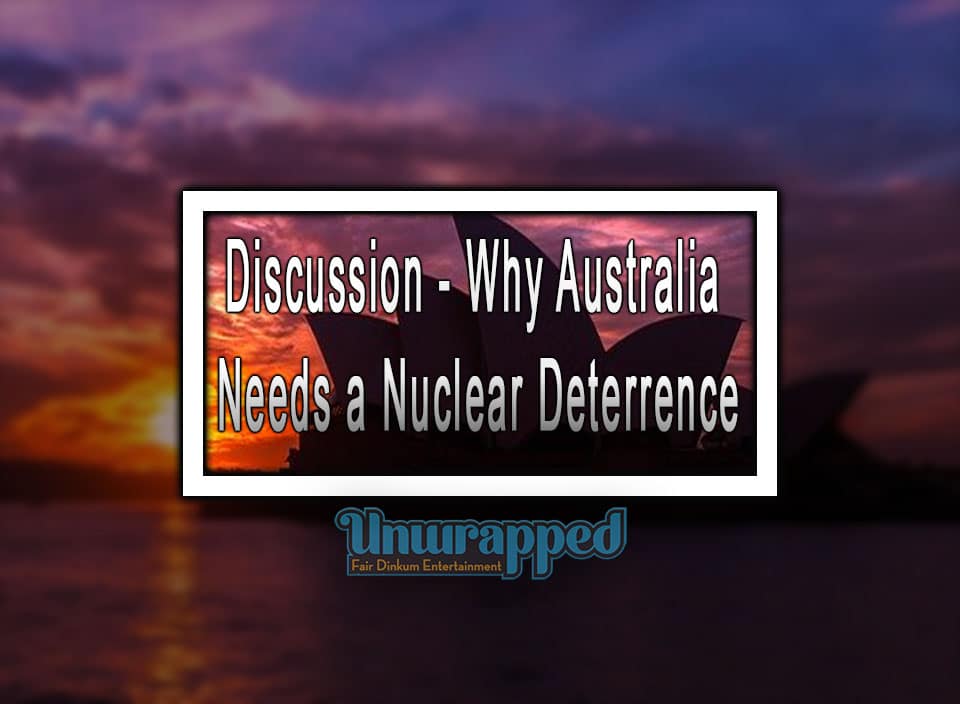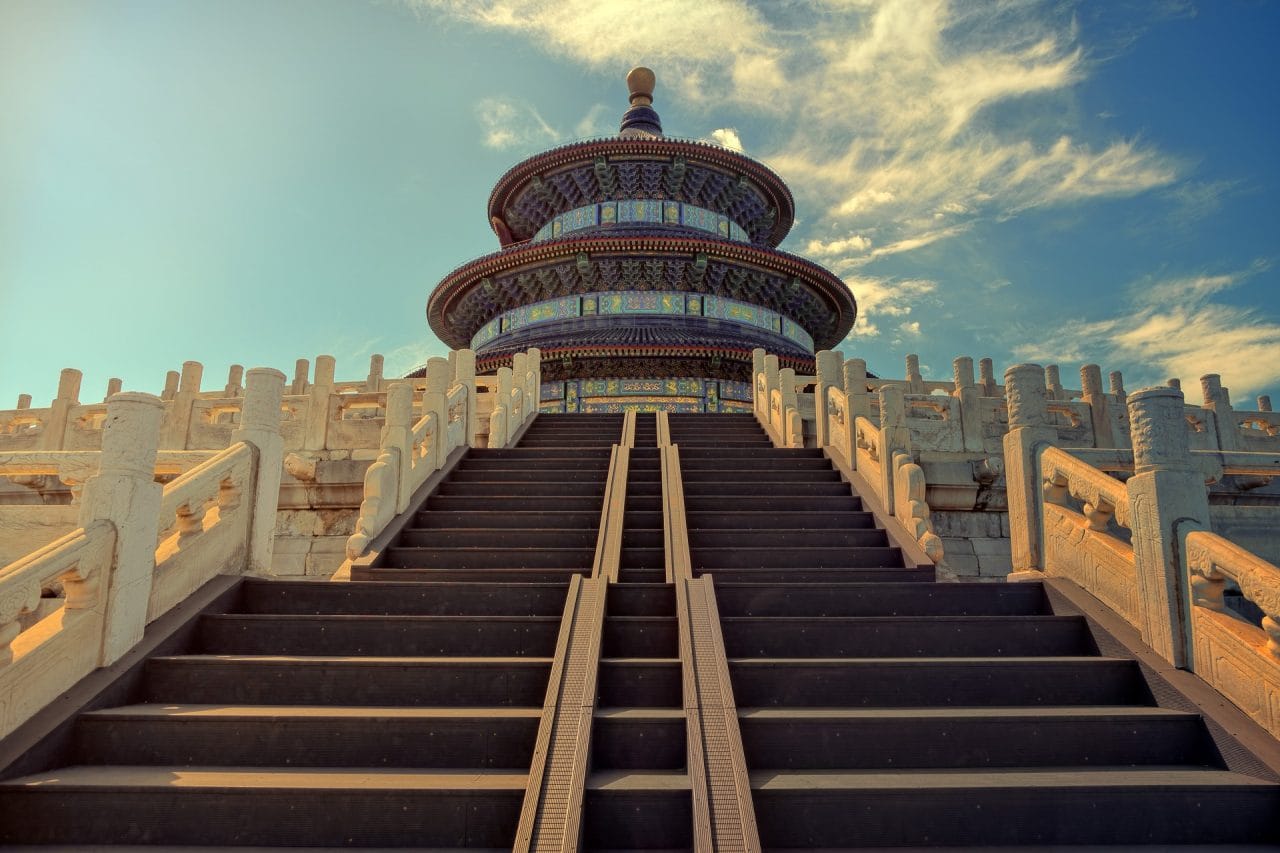Nuclear Deterrence – Is This Something Australia needs?
1. The Weakening of the Allies
From the beginning of its independent life, Australia needed allies for its external defence. At first, Britain filled that role. Because of that relationship with the motherland, they invited the country to take part in two world wars. However, faced with the British’s manifest inability to continue to fulfil that role, Australia aligned itself with the United States during World War II. After it, they built a rigid alliance that lasts until today. They formalised it in 1951 with the ANZUS pact. It is a collective security agreement in the South Pacific to contain communism. SEATO also existed in this direction despite having an ephemeral life and little effectiveness.
The alignment with the American superpower did not change with the fall of the Soviet Union and the Communist bloc. The reconfiguration of the international order in the post-Cold War resulted in a “unipolar moment” (Krauthammer, 1991) where Washington enjoyed being the “Lonely Superpower” (Huntington, 1999). According to its values, it thus boosted an order based on extending democracy and liberalism and promoting Globalisation.
Throughout this period, the United States exercised what is known as its “Indispensable Leadership” in the Asia-Pacific. The hegemonic order established by Washington has been the foundation for the Asia-Pacific to stabilise and grow economically for 70 consecutive years. The “Asian miracle” was possible since international financial institutions and multinational corporations invested resources, promoted the free trade system and created an open and competitive market in the region. Washington thus expanded its interests, spreading its political, economic, and military influence in the region.
This situation suffered in the new century and manifested itself clearly after the financial crisis in 2008-2009. The superpower showed symptoms of weakness and then outlines a leadership crisis and it is even possible to wonder if it is a hegemonic crisis. Concepts such as World Disorder, the slow end of Anglo-Saxon influence, The Post American World (Zakaria, 2008), the Rise of “The Rest” (Amsden, 2003) and the Hegemonic Transition model (Organski, 1958), are some concepts used in current international relations to explain reality.
Although the new scenario is clearly appreciated economically, it has a particular manifestation on the strategic-military plane. The renewed role of Russia involved in a conflict with Georgia over South Ossetia in 2008, and with Ukraine annexing the Crimean peninsula in 2014 and fostering the rebellion and secession of Donetsk in 2014, has jeopardized relations within the NATO. Fearing a new Russian expansionism, European countries pressed for a greater American commitment to defense.
Although the great annual military exercises were reactivated, 3 permanent brigades were created in Eastern Europe; the United States began to demand greater military spending from its NATO allies. This request was deepened with the arrival of Donald Trump, who demanded that his partners meet 2% of the defense budget if they wanted to continue counting on the American defense. And it was more forceful in arguing that the United States cannot defend the entire world and its allies must assume greater commitments and a greater role in their own defense.
Also, the weak situation became noticeable in the Middle East. After the crusades in Afghanistan since 2001 and Iraq since 2003 without achieving stability for both countries, it is time for withdrawal. It is a full scale retreat as it also played a very low role in both the Syrian and Yemeni conflicts. Its new strategy is to delegate functions of greater prominence to its regional allies such as Saudi Arabia, providing only material and technical assistance. The only case the United States maintained direct control was with respect to containing Iran over its nuclear plan.
The United States has redesigned its global defense obligations, becoming more selective and thus lessening its commitment to defending its allies and simultaneously demanding greater responsibilities from them. This situation has not yet happened with Australia as Washington ratifies its support and increases military ties. However, the dizzying rise of China forces us to rethink the course of current defense strategies for the Asia-Pacific.
2. Chinese Expansionism
The beginning of the 21st century brought about a change in the international order or at least a transition from a unipolar order to a world with a multipolar tendency. In this new scenario, the role of the People’s Republic of China begins to stand out, which since the 1990s has become the “factory of the world” producing a change in the centre of gravity of world trade and production. This phenomenon cannot be understood in isolation but encompasses Asia-Pacific as a system as a whole. In this region, there has been a process of economic restructuring (productive, commercial and financial)[1].
In this way, the relevance of China and of Asia in general at the beginning of the 21st century meant a “tectonic change” in the very dynamics of international relations, since, for the first time in five centuries, the centre of world power and wealth moved from the Atlantic to the Pacific. There is talk of the transition from one Westphalian system to another Eastphalian, or at least of Easternization, understood as a geographical change of power (Rachman, 2016). China thus creates its own central structure, semi-periphery (part of Southeast Asia) and the periphery made up of Latin America and Africa.
At first, China’s global rise has been peaceful, collaborating and cooperating with the United States and not opposing it. This strategy became known as keeping a low profile. Furthermore, the growing commercial and financial interdependence has acted as containment or appeasement of the rivalry. Although in North America some internal sectors perceived China as a threat to hegemony, it was considered only as an economic power.
The problem arose in a second stage, with the launch of the Chinese Grand Strategy. The same meant for this actor an unusual role until then. Little by little it went beyond Asia, building a global network, that is, acting throughout the world. As it became more powerful, it began to displace American supremacy in parts of Asia. The United States’ military capabilities still dominate Asia, but China has begun to exercise increasing military power and political influence to reorder the region.
China has totally asymmetric potential in relation to the countries in the area and little by little it is perceived as a threat. It is true that the arrival of Donald Trump at the White House has exacerbated the antagonism, generating great global uncertainty. At the same time, there is an increase in tension around Beijing’s maritime-territorial claims. It is a rivalry not ideological but of interests, a product of the affirmation of interests in the area of an increasingly powerful China in a context marked by a growing weakness of the political image and the strategic credibility of Washington.
Beijing denounces western militarism and advocates an Asian security order. This means making Asia a Common House for Asians. For this, it intends to establish common security mechanisms without outside intervention. China promotes a new regional security architecture with it as the dominant actor. He is firmly convinced that Asians can and should solve their problems on their own. He opposes the Japanese-American security concept of basing security on military alliances that can only generate antagonisms.
As a first step, China established an “advanced defence” naval strategy to secure its maritime transit routes, both for the import of central supplies for its economy (energy, food and capital goods) and for the export of consumer goods and machinery that is the engine of their economic growth. This led to the increased naval presence in the South China Sea, a security provision in the Malacca Strait, and prominence in the Indian Ocean (establishing naval bases in Sri Lanka and Djibouti).
This abrupt rise in China has had a very profound impact on Asia-Pacific. In general, it has been viewed with mistrust by the region. Consequently, Beijing’s containment strategies have been stepped up. The first and most chosen option has been balancing or balancing power, which is approaching the United States or deepening the alliance with this country. The other innovation has been the “matching” or the concretion of multiple alliances with regional actors opposed to China. In this case, there is an increase in reciprocal commitments between India, Japan, South Korea and Australia, for example. The last option far from containing is the Bandwagon, which means getting on the winning car; here it would involve aligning with China. This is the Asian choice: the United States or China? (Bloomfield, 2016; Yeung, 2016).
Asian countries trade more with China asymmetrically, producing an imbalance that does nothing but grows. But on the other hand, the sale of military equipment and weapons shows the influence of American power. Countries buy weapons from the United States by tying their armies and foreign policies to the United States. Therefore, they face the difficult decision between opting for wealth and business with China and the security that Washington provides. Most countries try to remain equidistant and thus benefit without aligning with either of the two powers. It’s about the illusion of being in the middle of the road or just hedging.
For its part, the United States reacted first with its Asian Pivot strategy and then with Rebalancing. In this way, he practised China’s containment policy trying to add three heavyweights from the region: Japan, India, and Australia. He reinforced these military alliances and even thought about implanting an anti-missile shield in the region. Added to this is the ambitious cooperative project of economic integration. TTP. Unfortunately, the Trump administration dismissed the free trade agreement and tightened military support. Given this scenario, several countries in the region are modernizing and expanding their defensive capabilities. And in some cases, they are deepening their relations and alliances with the United States. This is the case of Japan, South Korea or the Philippines, and even Vietnam, although with its particularities.
As an example, Japan is strengthening, re-emerging, leveraging its economy (the third-largest in the world), and pretending to stop being a political dwarf to form independent and powerful armed forces, while diversifying its alliances and diplomatic relations to contain China. Japan recognises the emergence of China as a geopolitical fact and expresses its concern with the proactive nature of Chinese foreign policy. His attitude has been to fight for the “Strategic Rebalance”, that is, to reissue the alliance with the United States.
It also modified its constitution with the backing of the United States, altering what was established in the aftermath of the Second World War in order to rearm and dispose of its own armed forces. Although Tokyo recognises North American dependency to defend itself from China, it strives to cut that dependency and build its own defensive power. Proof of this is the increase in defence spending, mainly of naval armaments for the construction of two aircraft carriers and multiple submarines.
Read More:
United Kingdom’s Liberation of Europe – Brexit
3. Australian Alternatives and Nuclear Deterrence
Due to the geographical region in which it is located, Australia is one of those countries that is caught in geopolitical competition between China and the United States. The country is immersed in nothing less than a strategic struggle between its main trading partner and its main defence ally.
However, its orientation seems to be clear. Australia assumes its western history and culture and therefore adheres to the perception of Chinese expansionism as a potential threat. The link with this country, although it is very deep and intense, is only economic, and not political or strategic. And even dependence on Chinese manufactured products is beginning to be rethought in the face of the Covid-19 pandemic.
For Australia, the profound change in its international economic relations occurred in 1973 after eliminating imperial trade establishing a preferential tariff agreement in all the territories of the British Empire and members of the Commonwealth due to the admission of the United Kingdom. in the European Community. The consequence was the exchange of China for Great Britain as the origin and main destination of its trade, as well as that of the European continent for the Far East.But on the contrary, Australia is increasingly immersed in the American military strategy for the region. Washington aims to make Australia a strategic partner to counter Chinese growth and influence in the region. The objective is to create a common front of regional countries against Beijing, taking the South China Sea as an emblematic case. To this end, military cooperation was reinforced with the signing in 2014 of the Force Posture Agreement, which promotes the US military presence in Australia. It is part of the Marine Rotational Force-Darwin initiative to establish 2,500 marines in the north of the country and build a new port in Darwin in order to meet the requirements of the United States Navy.
In this direction, the Australian Defense White Paper was designed in 2016. It established an ambitious plan for the Navy through a shipbuilding program that, in turn, will allow the development of powerful indigenous shipbuilding industry. For this, an Integrated Investment Program was set and the goal of reaching 2% of GDP in the 2021 budget. Currently, according to the World Bank, the defense was 1.8% of GDP in 2019, while SPIRI indicates that it covered 5.1% of the national budget for that year.
Finally, the end of the Five Eyes intelligence community was reoriented. Although this initiative has been operational since the end of World War II, in recent years it has been expanded with three members (France, Germany and Japan) in order to take information and intelligence measures against the expansion of China. For this, for example, the government vetoed the telecommunications company Huawei, assuming the Chinese company as a central intelligence risk.
Despite this great effort to improve national security, one wonders if it will suffice. There is no shortage of views that the United States will not be able to mitigate Australia’s dependence on Chinese trade and investment. Consequently, Washington is a declining power in the region, and it is quite likely that in the long term it will lose the confrontation with China. Then again you need to ask yourself what to do, how to react.
A first alternative would be to progressively modify the alignment of Washington to Beijing. However, as already stated, Australia assumes itself as a country of western culture and deeply distrusts China, its tradition and its belief system. Therefore, it would be unacceptable from the internal variable, that is, to obtain the consent of the citizenry and the ruling class for such a purpose.
There is also another alternative to sustain Australia’s current way of life. It consists of further strengthening the defence sector. In a way, take the attitude that Japan is developing regarding rearmament. But go one step further. Perhaps in the not too distant future, the only possibility of defending oneself is by obtaining a nuclear deterrence capacity of its own. This would lead to the development of both a civilian and military nuclear industry and be complemented by the development of a ballistic missile project.
Why such an extreme option? The truth is that Australia is a state-continent, this implies a lot of territories and at the same time it has little population to occupy it. Consequently, many regions of the country are depopulated, and land ownership continues an accelerated process of foreignization. To protect all this space, unfortunately, Australia does not have a permanent Army. And if it wanted to develop it, it would not have sufficient population to obtain the number of soldiers necessary for it. In addition, and more relevant, are the enormous maritime spaces to guard and protect that although it tries to do so, it is not always possible. If these shortcomings do not represent an immediate risk, it is because the country has an external ally that provides its defence and in turn holds the monopoly of nuclear power and its deterrence in the region.
The problem lies in that, although the United States manifests its commitment to defence; it is in a process of decline and demands more and more economic and human effort from its allies. Australia must not only respond to this but needs to prepare for when Washington further withdraws its support. It is at this time that Australia would need to have its own nuclear weapons as a deterrent to defend itself. The development of this new capacity will be a process in the medium and long term, anticipating a change in the regional and global environment.
4. Paths to Achieve it
Taking that technological and strategic leap is not an easy task. Few countries have such capacity. It is a select club of nuclear powers that resist new actors reaching this goal. Examples of this are the pressures and sanctions that were applied to both Iran and North Korea as a result of their challenge, despite the fact that the latter country has managed to complete the process and has de facto nuclear capabilities.
The United States, France, Great Britain, Russia and China, that is, the permanent members of the United Nations Security Council are the holders of such power. They are in turn the custodians of the Nuclear Non-Proliferation Treaty (NPT) that tries to maintain said Status Quo. Is it then impossible to become a nuclear power? No, there have been exceptions. Israel and Pakistan are nuclear powers, although not recognised as such. They maintain nuclear arsenals that are not monitored by the International Atomic Energy Organisation. On the other hand, there is the case of India, which was recognized and admitted with the status of nuclear power in 2005 purely and exclusively by American support (and Chinese annoyance) after long decades of possessing this de facto attribute.
That is why Australia can aspire to develop this technology[2]. It has three essential attributes for it. First of all, its history describes that it is a peaceful country, which it has not carried out aggressions, that it is responsible and strives for regional and world peace and stability. It has multilateralism and the peaceful settlement of disputes among its principles of action. Consequently, making such a leap in global stratification would not be for warlike or irresponsible purposes such as serving the proliferation of nuclear material towards third countries, but simply to provide its own defence from a peaceful and prudent place.
Second, the country has trained scientific and technical personnel for this purpose. Furthermore, Australian universities could contribute enormously by training human resources and serving as a setting for both basic and applied research.
Third and foremost, it would not be a challenge or a rebellious attitude against the current status quo. As in the case of India or even Israel, it should be carried out with the American political and diplomatic support, or at least its acquiescence. In addition, it would require technology transfer, investments and technical training that both Washington and the European powers can provide. This requires maintaining and continuing to build trust with these allies.
Finally, a plan of such magnitude would not only be relevant in terms of national defense but would contribute to civil sectors such as energy production, nuclear medicine and in the scientific research sector, among others.
Read More:
Bibliography
Amsden, Alice, (2003). The Rise of “The Rest”: Challenges to the West from Late-Industrializing Economies. Oxford University.
Bloomfield, Alan. (2016). To balance or to bandwagon? Adjusting to China’s rise during Australia’s Rudd_Gillard era. The Pacific Review, Vol. 29, No. 2, Pp. 259-282.
Huntington, Samuel (1999). The Lonely Superpower. Foreign Affairs.
Krauthammer, Charles. (1991). The unipolar moment. The Washington Post.
Organski, Kenneth. (1958). World Politics. New York: Alfred A. Knopf.
Rachman, Gideon. (2016). Easternization: Asia’s Rise and America’s Decline from Obama to Trump and Beyond. Rachman Books.
Yeung, Man Kwong. (2016). Balancing versus bandwagoning the strategic dilemma of Australia’s China policy. Master Thesis. Lingam University.
Zakaria, Fareed. (2008). The Post American World. W. W. Norton & Company.
[1] The Chinese emergency has produced an industrial restructuring in Asia and the Pacific and a consequent change in relationship dynamics. China has displaced Asian countries in labour-intensive products, becoming the world’s leading exporter of these products. Therefore, Asian countries have increased their productivity to sell China intermediate goods for their production while Japan provides it with high-tech, high value-added goods. Funding and investments for China come from the United States, Europe, Japan, Taiwan, and the vast Chinese community scattered around the world.
[2] The same can be said for the development of ballistic missiles on which to mount nuclear warheads. It could start with a space project to design rockets and then move towards vectors to gain experience and finally lead to a military plan for missile design. For this, a special relationship with the actors of the Missile Technology Control Regime (MTCR) is necessary.
Also Enjoy:
Meaningful and Inspirational Quotes by Joseph Stalin

Main Image Source : Pixabay
Also See : Amazing Places to Travel in Australia – Bundaberg











